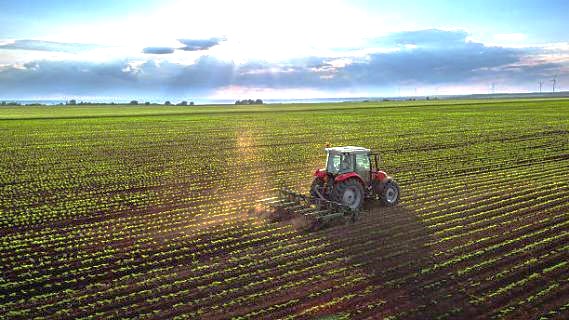Despite popular belief, agricultural income in Pakistan is indeed taxed, but it differs from other types of income in a couple of key ways. First, the collection of agricultural income tax (AIT) is managed by the provinces. Second, the maximum tax rate for agricultural income is only 15 percent in Punjab and Sindh, much lower than the rates for salaries and business income.
Following the federal budget announcement, there has been increasing pressure on the government, especially from the salaried class, to align AIT rates with federal business income rates to ensure fairness—where individuals with the same income pay the same taxes.
Critics point out that the revenue from AIT is less than Rs4 billion, which is less than 0.01% of the national GDP. This is minimal compared to the agriculture sector’s significant 24% contribution to GDP, which totals Rs22 trillion.
The agriculture sector includes various subsectors like crops, livestock and dairy (including poultry), fisheries, and forestry. However, the crops subsector is often mistakenly equated with the entire sector, leading to discussions primarily about tax concessions for landlords.
Requiring all farmers with more than 12 acres to file AIT returns would result in approximately 0.7 million returns annually, necessitating an institutional setup that would be about one-fifth the size of the FBR.
In reality, the crop subsector contributes only 8.54% to the country’s GDP, while the remaining subsectors contribute 15.46%, making up 64.48% of the agriculture sector.
In Punjab and Sindh, which account for around 90% of Pakistan’s agriculture (crops subsector), AIT is both land-based and income-based; farmers pay the higher of the two. Large farmers often file income-based AIT returns with both the provincial Revenue Department and the Federal Board of Revenue (FBR) to receive “filer” benefits.
It is reported that the declared taxable income often does not reflect the land’s income-generating potential. In some cases, farmers use tax shelters by reporting business income under agriculture.
Small and medium farmers usually opt for a fixed land-based AIT, a nominal amount ranging from Rs200-500 per acre, which constitutes only 1-2% of their net earnings per acre, indicating a potential for increasing AIT.
Unlike other sectors, AIT collection is expected to decline over time due to land division among family members, either due to inheritance or deliberate title transfers to avoid the rumored tax rate of up to 45%. This will likely reduce medium and large farms below the annual AIT income threshold of Rs0.6 million (in Punjab).
The agriculture sector mainly produces basic commodities rather than value-added products, so margins are not significantly higher. With 10.3 million farms (estimated as of 2024) contributing only 8.54% to GDP, using GDP contribution to gauge tax potential is not straightforward.
Aligning the taxation of large landlords—especially absentee ones—with the FBR’s business income rates seems reasonable. However, the situation of small and medium farmers should be considered when designing the new AIT regime.
Farmers may transfer land to family members to avoid the IMF’s proposed 45% tax rate, further reducing AIT revenue.
Over the past two years, the prices of agricultural inputs have surged while crop prices have fallen, drastically reducing farmers’ profitability and leaving them struggling.
Farmers have long faced implicit taxes due to government policies aimed at keeping agricultural produce prices low for urban consumers or the agro-processing sector. Measures like export bans, restrictions on inter-provincial movement, and price controls result in implicit taxes that transfer resources from agriculture, amounting to $1-2 billion annually—more than the total subsidies allocated to the sector.
Assessing agricultural income is challenging due to significant variations in crop yields and price fluctuations, which complicate calculating profitability for tax purposes. Small and medium farmers, being part of the informal economy, often lack adequate accounting practices.
Requiring all farmers with more than 12 acres to file AIT returns would result in approximately 0.7 million returns annually, demanding an institutional setup one-fifth the size of the FBR. This could lead to administrative costs exceeding the additional AIT revenue.
Globally, four common methods for AIT assessment are: land-based, rental value of land, actual income, and presumptive income. Regardless of the method, the system should be simple, minimize discretionary powers, be administratively feasible, and cost-effective.
In conclusion, imposing AIT on small and medium farmers might be considered using presumptive taxation based on the existing Produce Index Unit of land, which measures productivity by factors like soil type and irrigation method.
Farmers with more than 50 acres of irrigated land should be taxed similarly to business income under the AIT regime, following progressive taxation and vertical equity principles.




